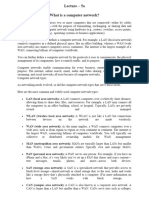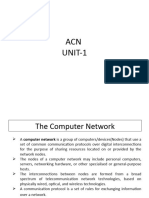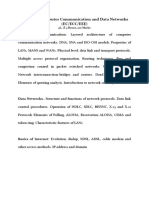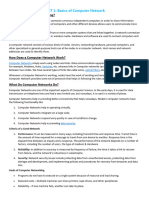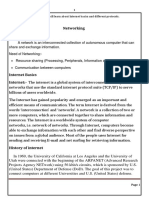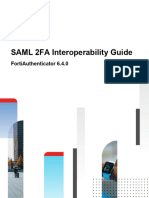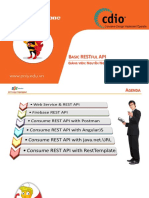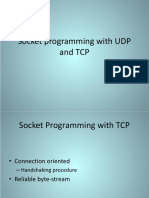0% found this document useful (0 votes)
7 views5 pagesComputer Networks
A computer network consists of interconnected devices (nodes) that communicate using links and protocols to share data. Key functionalities include error control, flow control, and multiplexing, which ensure data integrity and efficient transmission. Various types of networks, such as LANs and WANs, facilitate communication over different distances and environments.
Uploaded by
Tulika ChauhanCopyright
© © All Rights Reserved
We take content rights seriously. If you suspect this is your content, claim it here.
Available Formats
Download as DOCX, PDF, TXT or read online on Scribd
0% found this document useful (0 votes)
7 views5 pagesComputer Networks
A computer network consists of interconnected devices (nodes) that communicate using links and protocols to share data. Key functionalities include error control, flow control, and multiplexing, which ensure data integrity and efficient transmission. Various types of networks, such as LANs and WANs, facilitate communication over different distances and environments.
Uploaded by
Tulika ChauhanCopyright
© © All Rights Reserved
We take content rights seriously. If you suspect this is your content, claim it here.
Available Formats
Download as DOCX, PDF, TXT or read online on Scribd
/ 5











